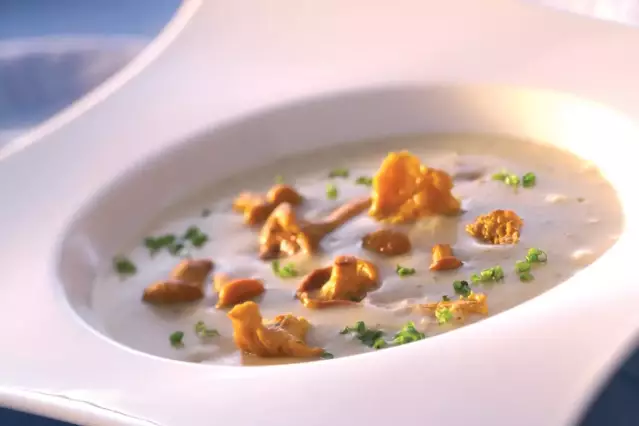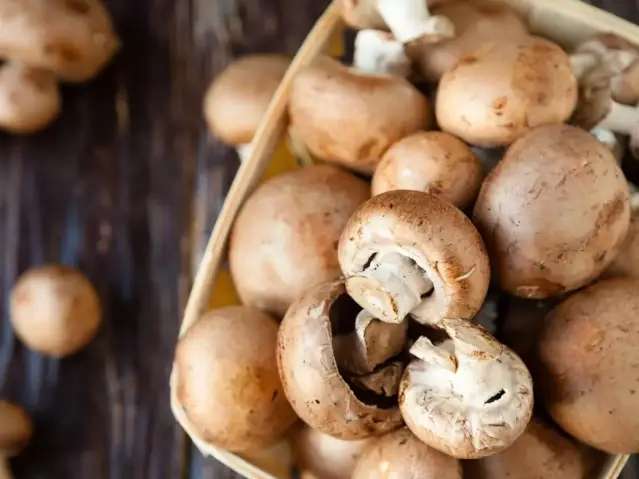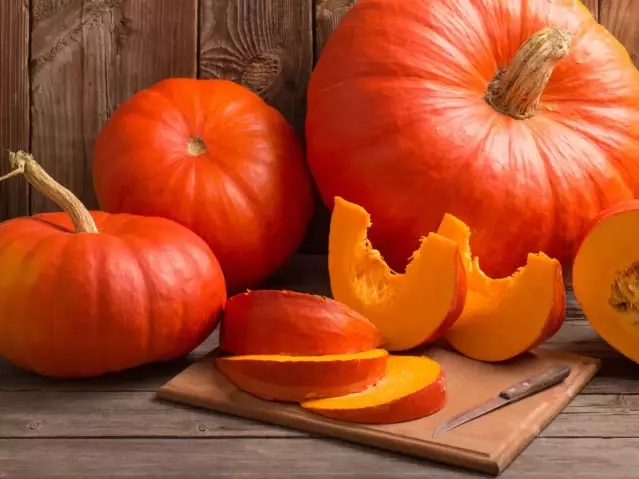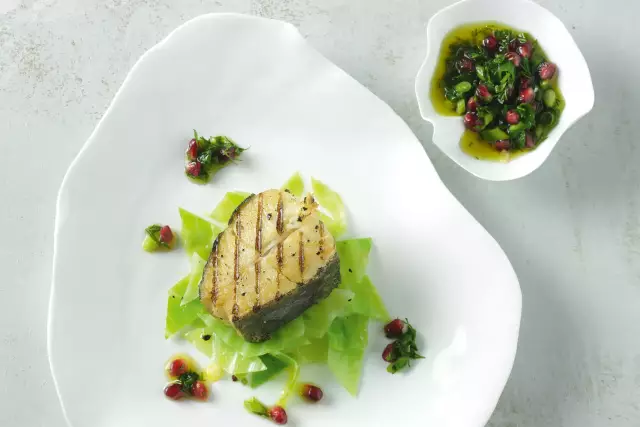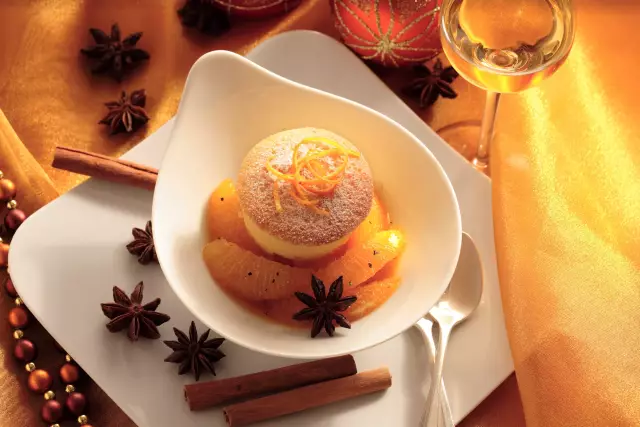Mushrooms & Wine

Wild mushrooms can be quite demanding in their choice of culinary partners and prefer wines with subtle and mild flavours. While a delicate potpourri of mixed mushrooms requires a full-bodied wine, flavours should not be too overwhelming.
Facts
-
2019
The chanterelle was the mushroom of the year
-
The fourth
Saturday in September is celebrated annually as European Mushroom Day.
-
About 2kg
mushrooms are consumed per capita in Germany every year
Delicious pairings - Wild mushrooms and wine
Take porcini, for instance: These most exquisite of all edible mushrooms form a perfect symbiotic relationship with a Pinot Blanc that is full-bodied yet delicately fruity. Even rather mature wines are great companions, since the subtle flavours of the mushrooms make them appear youthful and fresh. A mild acidity retains the harmony of this delicate, melt-in-the-mouth dish.
More expressive dishes, such as porcini or other mushrooms that have been fried to crispy perfection in butter, harmonize well with heartier wines with a fresh, fruity acidity, such as Riesling – a delectable alliance.
Wild mushrooms play a pleasant supporting role alongside a roast. In this case, the roast takes precedence in selecting the wine companion. However, wines such as a smooth Pinot Noir from the Ahr region or a subtle Meunier (Schwarzriesling) from Württemberg take care that the delicate mushroom flavours don’t get lost in this expressive mélange.
Mushrooms as a main dish, with a rich creamy sauce and dumplings, require a subtly fruity fresh Riesling that counters the exquisite opulence of the dish with its vivacity.
Autumn creations - wine harmony guaranteed
Whether you require a companion for delicately flavoured wild mushrooms or pumpkins: In the cellars of the German winemakers, a parade of fantastic wines is ready to give a brilliant performance on your table. And Wines of Germany has a few simple guidelines for you to follow – to avoid even the slightest hints of disharmony creeping into these alliances.
Wild mushrooms such as porcini, bay boletes and chanterelles
Braised, wild mushrooms tend to display extremely delicate flavours and acquire a melt-in-the-mouth touch. Most often, they are lightly sautéed in a frying pan with onions, only seasoned slightly and rounded off with a dash of lemon, in order to preserve their subtle nutty taste. Suitable wine companions should also help to retain the delicate mushroom flavours. A gentle Pinot Blanc or a Silvaner from Rheinhessen does a great job.
Crisp-fried in butter, porcini develop very distinct nuances. Their typical flavours form a delicious alliance with the delicate roast aromas. A smooth Riesling with a moderate fruity acidity is a welcome companion. It showcases the spicy nuances of the mushrooms. As far as red wines are concerned, a more distinctly fruity Pinot Noir or Portugieser fits the bill.
In a creamy sauce, mushroom dishes are not exactly light fare. A full-bodied Riesling or classic Pinot Gris makes for a happy combination. The wine’s balanced acidity, subtle richness and maybe even a hint of residual sugar are excellent counterparts for the potpourri of flavours created by braised mushrooms, cream and fresh herbs.
Mushrooms play an expressive supporting role alongside a roast. In this kind of menu, the roast takes precedence in selecting the wine companion. However, it’s a good idea to also pay attention to a harmonious relationship between wine and mushrooms. Smooth red wines with balanced tannins such as Pinot Noir from Baden or the Ahr region are commendable. Hearty red wines rich in tannins would take center stage here – and drown out the delicate mushroom aromas.
Can wines themselves develop a mushroom or champignon aroma?
Yes! This aroma manifests itself in earthy, spicy tones such as forest floor or foliage, but in extreme form it can also develop into an off-flavor. This strong mushroom note is caused, among other things, by the substance geosmin, which in turn can be caused by botrytis infestation.
Varietals

to sweet selections Apple doughnuts with vanilla sauce
to sweet selections
- 5 große, säuerliche Äpfel
- 200 Gramm Mehl
- 2 Eier
- 250 ml Milch
- 2 EL Rum
- Nach Bedarf Schmalz oder Öl
- Nach Belieben Zimt, Zucker, Salz
Peel the apples and remove the core, cut into finger-thick, even slices. Drizzle with rum and sugar. Leave to infuse.
Stir the batter, it should be quite thick. Turn the apple rings in it and bake floating in hot fat until golden brown.
<p
<p>Drain on kitchen paper and serve hot with cinnamon and sugar.
- Riesling (süß & edelsüß)
- Scheurebe (süß & edelsüß)
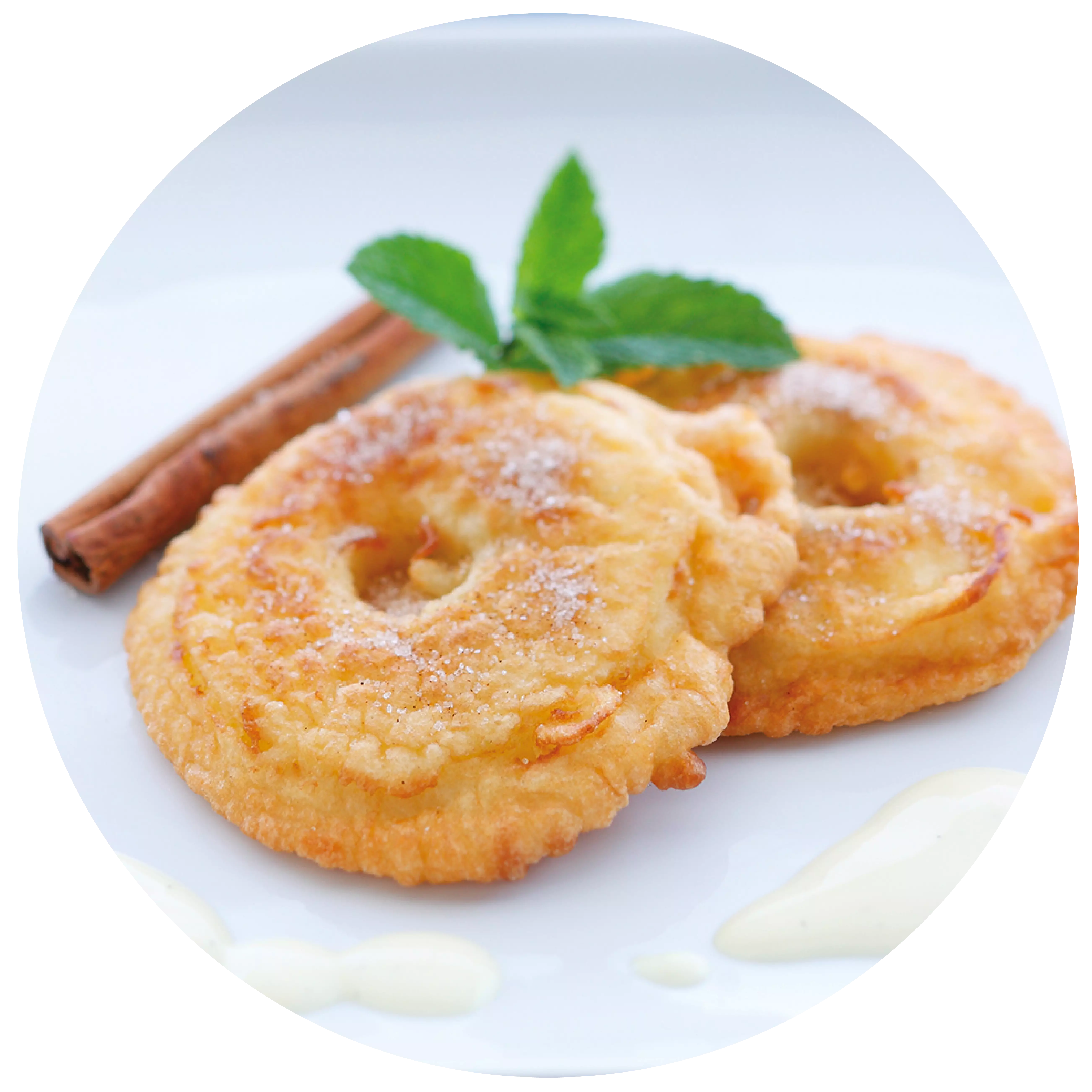
with pear wedges Chicken breast strips
with pear wedges
- 500 Gramm Hähnchenbrustfilet
- 2 reife Birnen
- 200 ml Birnensaft
- 100 ml Sahne
- 1 ganze Zwiebel
- 4 EL Olivenöl
- nach Belieben Salz & Pfeffer
Cut the chicken breast fillet into strips. Peel the onion and cut into cubes. Heat the olive oil in a pan and fry the meat in it. Add the diced onion and season with salt and freshly ground pepper.
Wash and peel the pears, remove the skin, cut into wedges and sauté in the pan. Deglaze with the pear juice and allow to reduce slightly.
<p
<p>Finally, add the cream and season to taste.
- Müller-Thurgau (halbtrocken & feinherb)
- Kerner (halbtrocken & feinherb)
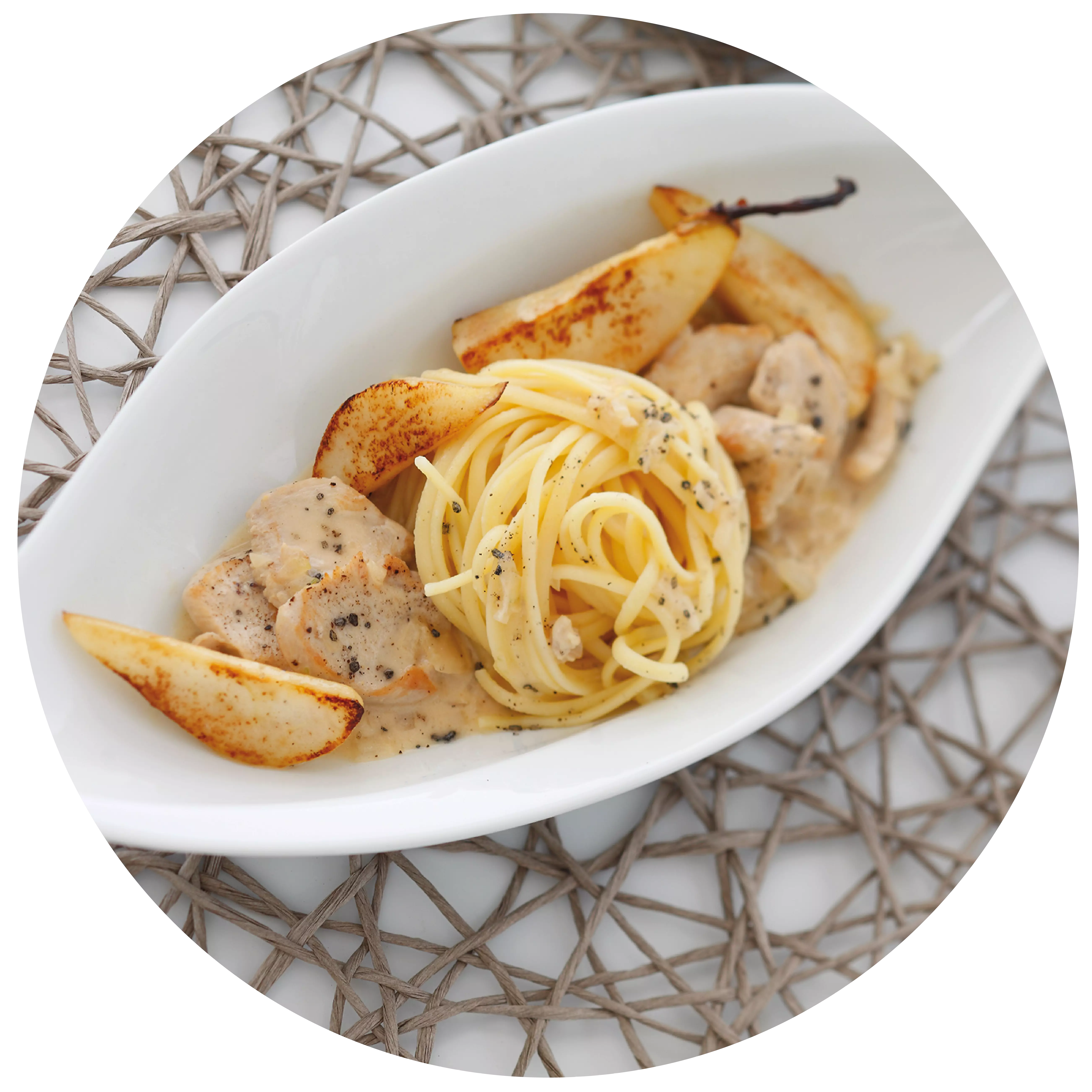
with strong red wine Wild boar ragout
with strong red wine
- 800 Gramm Fleisch vom Wildschwein (Keule o. Schulter)
- 80 Gramm Bauchspeck
- 100 Gramm Zwiebeln
- 60 Gramm Karotten
- 60 Gramm Staudensellerie
- 1 TL Tomatenmark
- 200 ml kräftigen Rotwein
- 100 ml Portwein
- 1 Liter braune Wildbrühe
- 1 TL Preiselbeeren
- 1 EL geschlagene Sahne o. Sauerrahm
- 20 Gramm Mehl
- 1 Stück Lorbeerblatt
- je 1 Zweig Rosmarin und Thymian
- 4 zerdrückte Wacholderbeeren
- 1/2 TL Senf
- nach Belieben Salz & Pfeffer
Clean and wash the vegetables and cut into evenly sized cubes.
Remove the fat, skin and tendons from the wild boar meat and cut into 3 cm cubes. Season with salt and pepper and sprinkle with flour. Heat the oil in a frying pan and brown the meat on all sides. Add the vegetables and diced bacon and fry. Add the tomato purée and stir fry. Deglaze with the red wine and port, reduce and pour in the brown game stock. Add the spices to the meat in a small spice bag and leave the ragout to simmer in the oven at 160°C for approx. 1½ hours.
Then remove the pieces of meat, remove the spices, strain the sauce, add the cranberries and mustard and leave to reduce for about 15 minutes. If necessary, thicken with a little cornflour. Serve with the whipped cream.
- Spätburgunder / Pinot Noir (trocken)
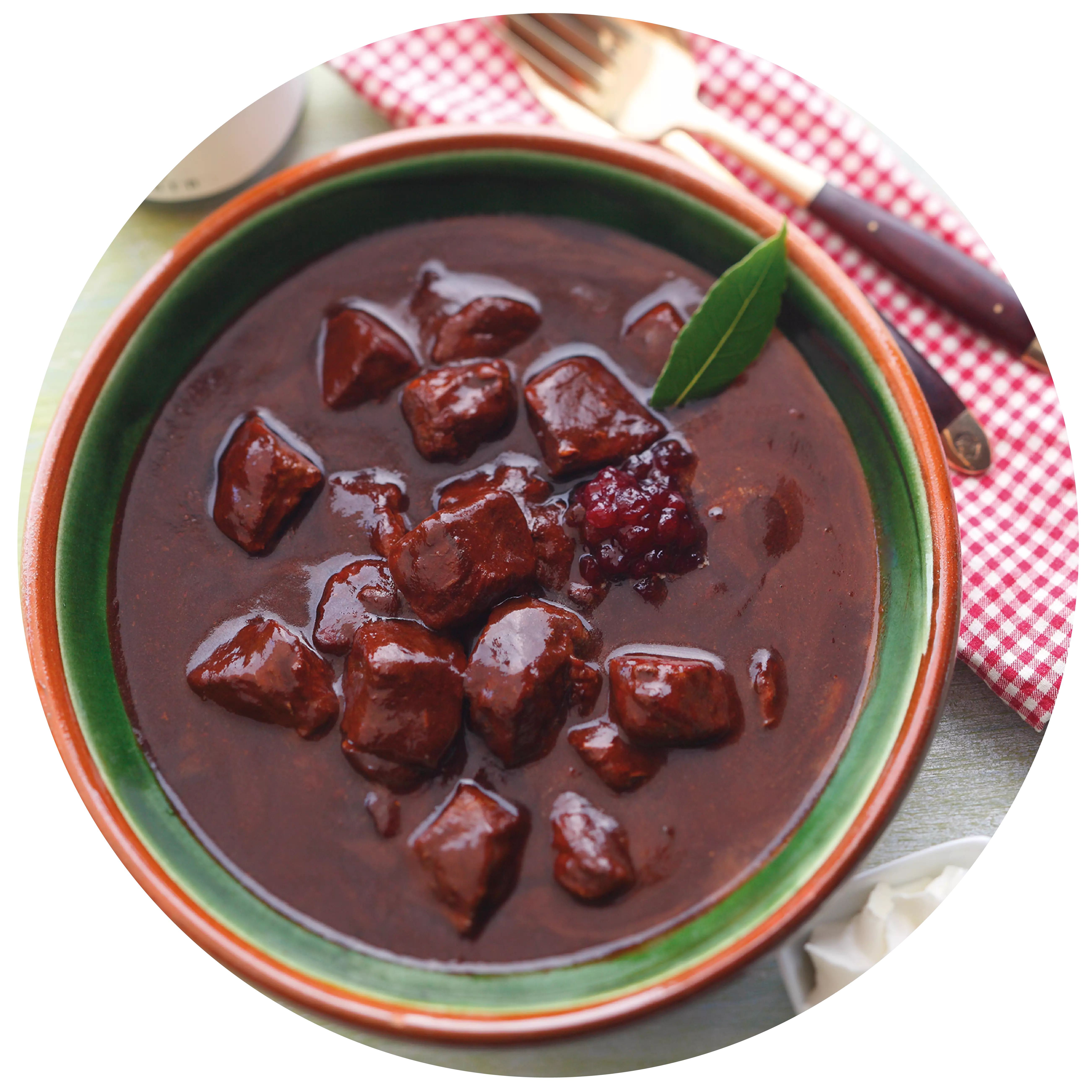
with white wine Cauliflower soup
with white wine
- 3 Stück Schalotten
- 500 Gramm Blumenkohl
- 20 Gramm Butter
- 1 TL Fenchelsaat
- 50 ml Weißwein
- 800 ml Gemüsebrühe
- 100 ml Schlagsahne
- 1 Prise Zucker
- nach Geschmack Salz & Pfeffer
Peel the shallots and cut into slices.
Clean and chop the cauliflower.
Melt the butter in a pan, sauté the shallots with the fennel seeds over a medium heat for 3 minutes until colourless. Add the cauliflower, sauté for 2 minutes, season with salt and sugar.
<p
<p>Deglaze with white wine, bring to the boil and top up with vegetable stock and whipping cream. Simmer over a low heat for 20 minutes.
Blend with a hand blender, adding stock if necessary to reach the desired consistency.
Serve drizzled with a few drops of olive oil.
- Silvaner (trocken)
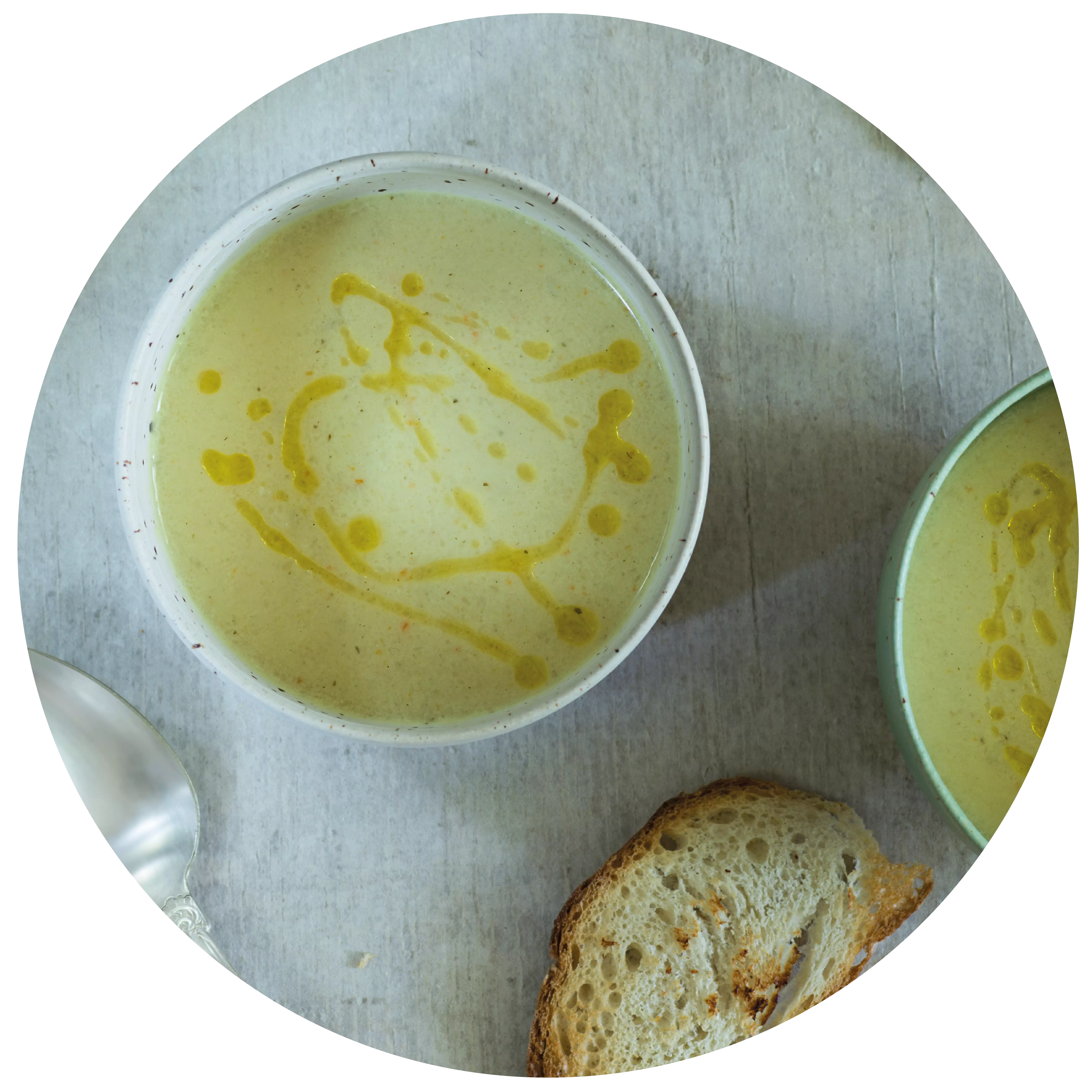
Teaser
Events
-
Show
winetasting in our winery - cheese & wine
Mainz-Hechtsheim


